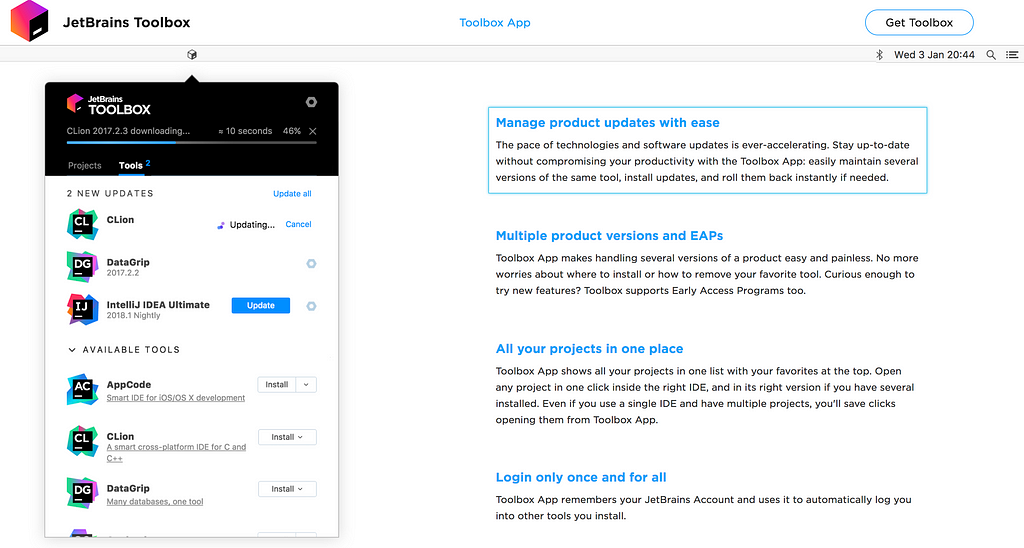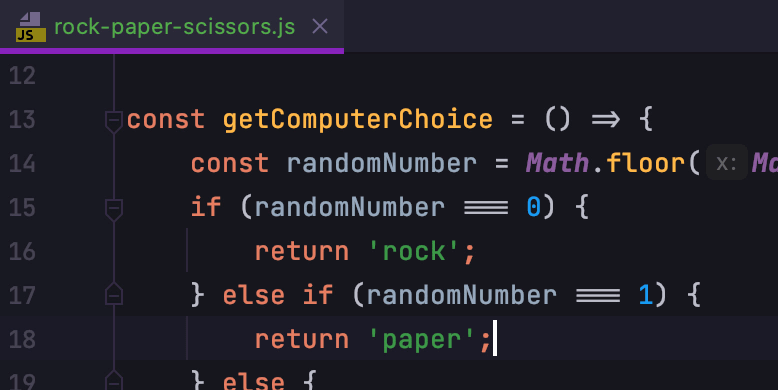

In addition to these new features, we’ve added a number of other improvements.
#Jetbrains webstorm restful code suggestions series
From here, we can replay HTTP requests that have been issued in the past, making it easier to work with a series of HTTP requests and switch between them: When an HTTP request has been executed, the REST Client will keep it available from the Recent Requests list, available from the toolbar.

When building an API yourself, why not generate a bunch of sample HTTP requests and distribute them together with your project? That would mean customers and users of our API can run some sample requests from within their IDE: We can also add these exports to VCS so team members can benefit from them:Īn exported HTTP request is stored in an XML file which roughly looks like the following. This allows us to create a series of HTTP requests that can be used during development, whenever needed. No more need to do that base64 encoding manually:Įvery HTTP request that is crafted through the REST Client can be exported and imported again later on. We can manually add an Authorization header to the request, or have PhpStorm generate a header based on the username/password entered.

Many APIs require us to provide credentials. A new tab will be opened which gives us the possibility to craft an HTTP request that can call a web application or an API running on a local machine, intranet or Internet server. The REST Client can be found under Tools | Test RESTful Web Service. This functionality is available in IntelliJ IDEA, P圜harm, WebStorm, PhpStorm, RubyMine and AppCode. dotCover calculates and reports statement-level code coverage in applications targeting. Make sure you know to what extent your code is covered with unit tests. Since then we’ve added a number of features to it-features that you have requested through our issue tracker. NET unit test runner and code coverage tool that integrates with Visual Studio and JetBrains Rider. For casual, unsophisticated applications by someone who grew up with green screen character based computers, it's probably OK.Building a REST API? Need to test a call to a web application? Look no further! Earlier this year we bundled a REST client plugin with which we can test HTTP-based APIs right from within our IDE. Support picture paste, file upload or drag and insert quickly. For this reason, I would not recommend Emacs to anyone who is under 50 year old, or who needs power user capabilities. Support outline, mathematical formulas, mind maps, charts, flowcharts, Gantt charts, timing charts, heading anchors, code highlighting, graphviz rendering. The things I just mentioned, are all present in some limited and inept form, but falls far short of current standard of good user interface design. To this day, it lacks or struggles with very basic things, like interactive dialogs, toolbars, tabbed interface, file system navigation, etc., etc. JetBrains WebStorm 2019 comes with pre-installed tools for complex client-side and server-side development. So Emacs does 5% or what an editor should do quite will, and is surprisingly under-powered and old fashioned at the other 95%. WebStorm 2019.1 brings improvements as well as powerful new features, including new faster and intelligent code completion suggestions, new code formatting options, and more. Error detection and suggestions/fixes are poor compared to IntelliJ platforms. Unfortunately, it didn't keep up with the times and fails to take advantage of the entire world of GUI design that's revolutionized computer science since then. The autocomplete and code check is not as powerful as the one on WebStorm. In fairness to Emacs, its original design was conceived in that context and is rather good at some things, like flexible ability to bind commands to keyboard shortcuts. User interface is terrible I was using Emacs in the early 1980's, before there were GUIs.


 0 kommentar(er)
0 kommentar(er)
